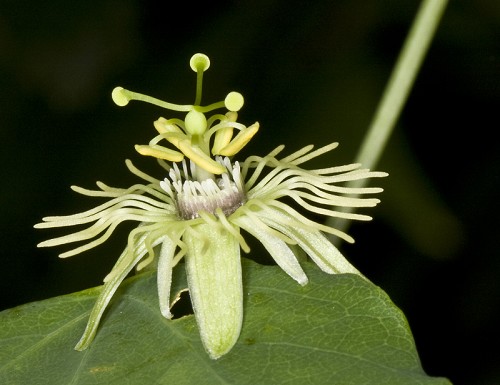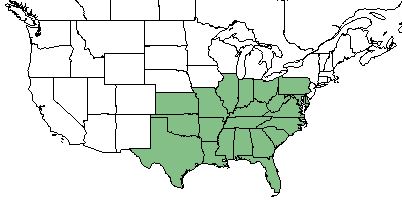Difference between revisions of "Passiflora lutea"
(→Description) |
(→Distribution) |
||
| Line 27: | Line 27: | ||
==Distribution== | ==Distribution== | ||
| + | ''P. lutea'' is found throughout the southeastern United States; from Florida north to Pennsylvania, and west to Texas and Kansas. <ref name= "USDA"> [https://plants.usda.gov/core/profile?symbol=CEAM USDA Plant Database]</ref> | ||
| + | |||
==Ecology== | ==Ecology== | ||
===Habitat=== <!--Natural communities, human disturbed habitats, topography, hydrology, soils, light, fire regime requirements for removal of competition, etc.--> | ===Habitat=== <!--Natural communities, human disturbed habitats, topography, hydrology, soils, light, fire regime requirements for removal of competition, etc.--> | ||
Revision as of 17:55, 24 May 2018
| Passiflora lutea | |
|---|---|

| |
| Photo by John Gwaltney hosted at Southeastern Flora.com | |
| Scientific classification | |
| Kingdom: | Plantae |
| Division: | Magnoliophyta - Flowering plants |
| Class: | Magnoliopsida - Dicots |
| Order: | Violales |
| Family: | Passifloraceae |
| Genus: | Passiflora |
| Species: | P. lutea |
| Binomial name | |
| Passiflora lutea L. | |

| |
| Natural range of Passiflora lutea from USDA NRCS Plants Database. | |
Contents
Taxonomic Notes
Synonym: none
Variety: glabriflora (Fernald)
Description
P. lutea is a perennial forb/her/vine of the Passifloraceae family that is native to North America. [1]
Distribution
P. lutea is found throughout the southeastern United States; from Florida north to Pennsylvania, and west to Texas and Kansas. [1]